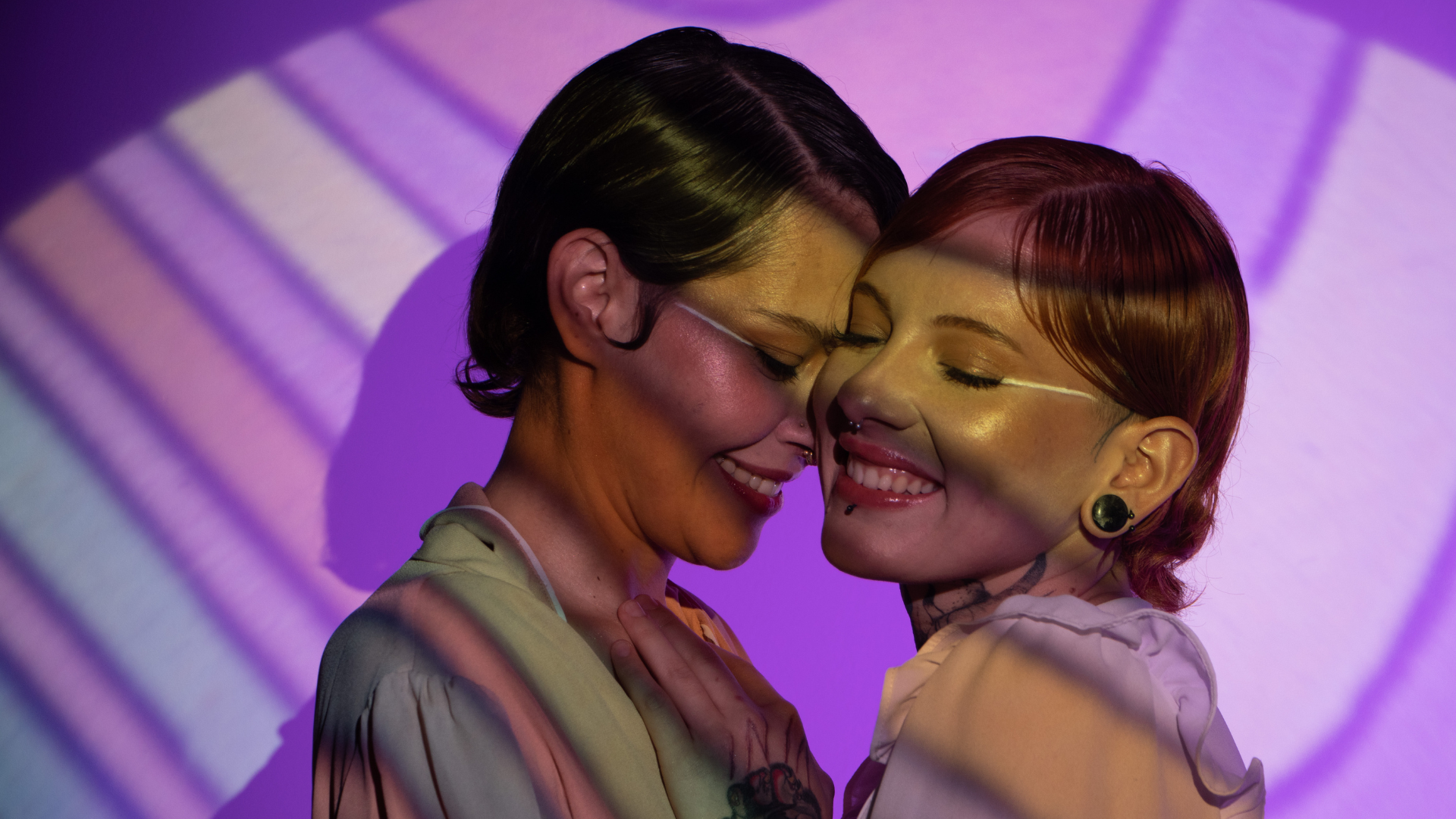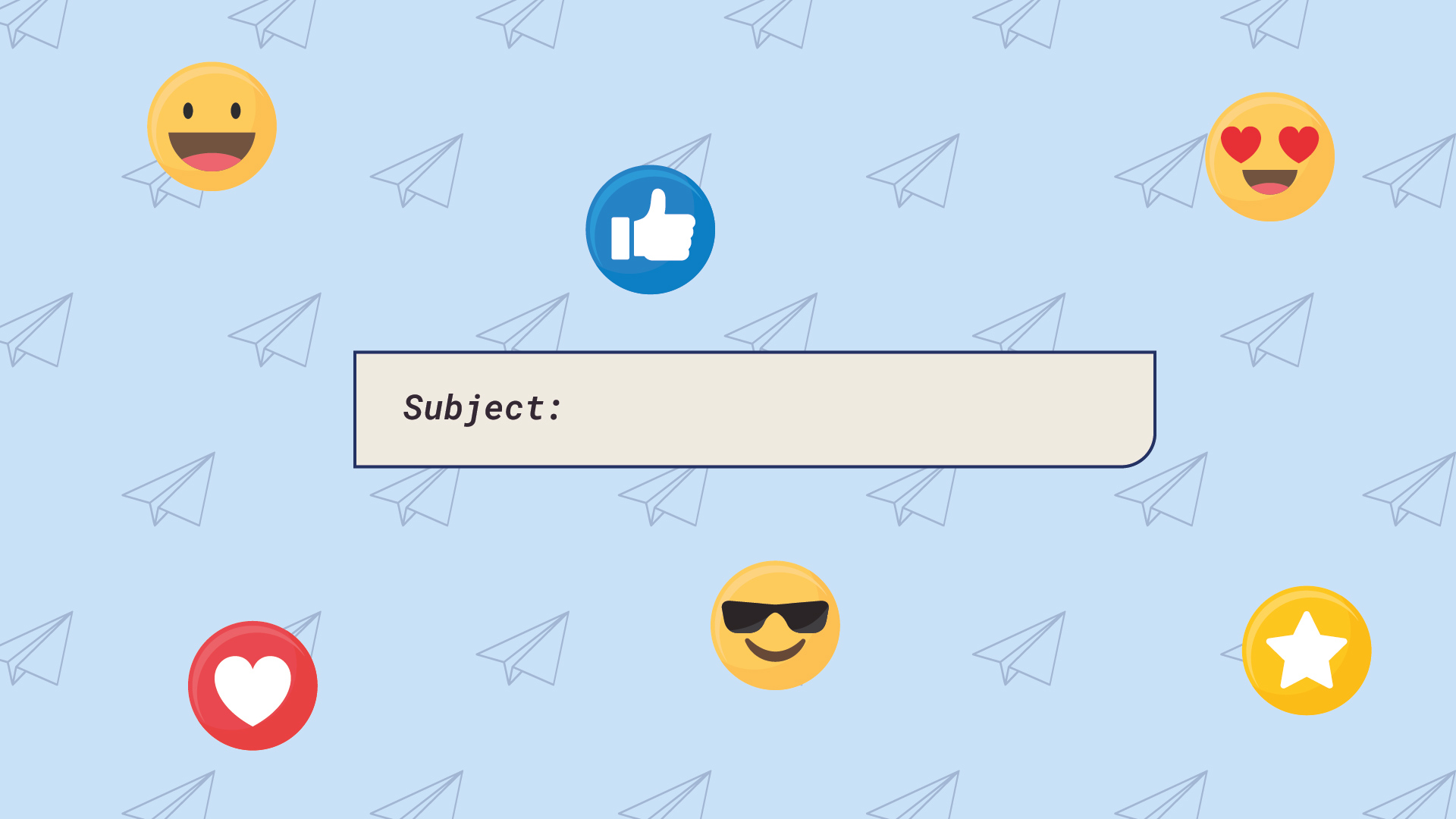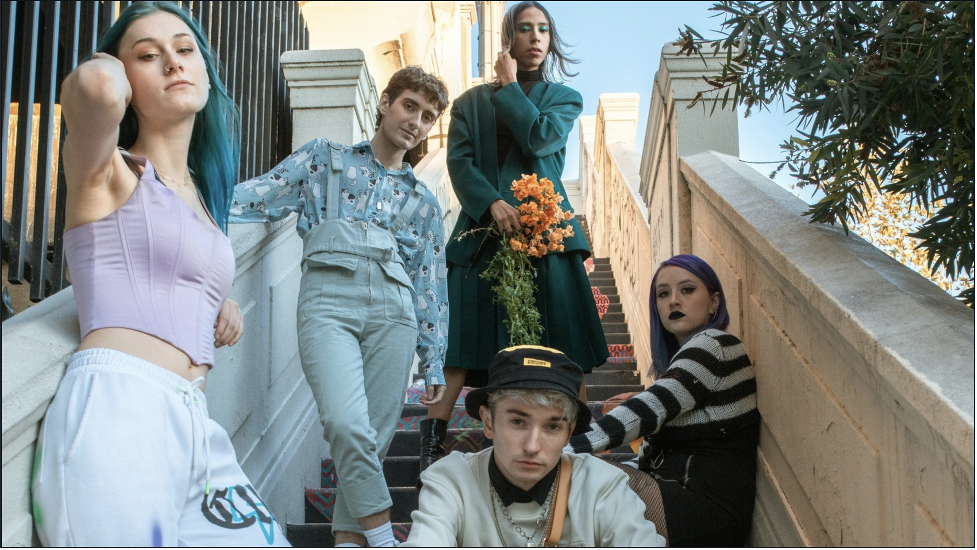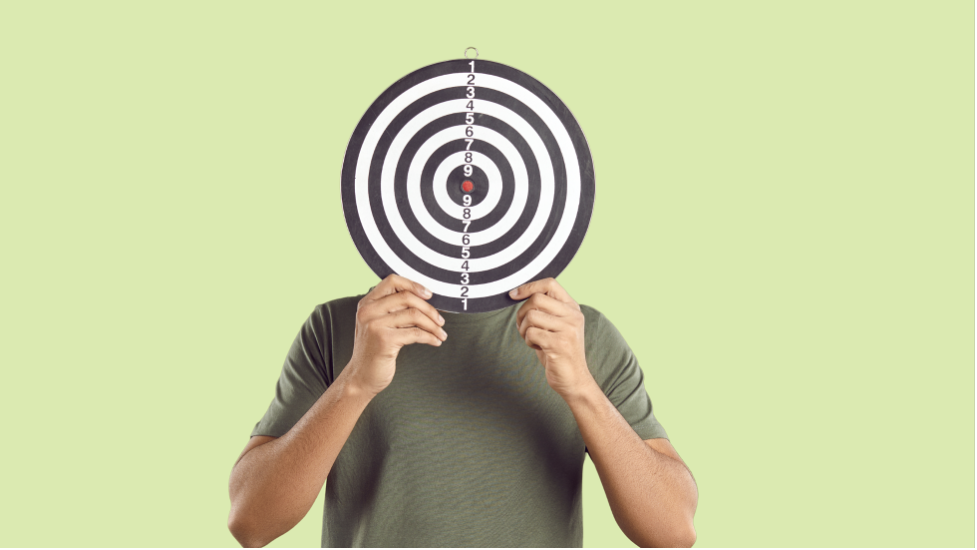Representation of LGBTQ+ folks in media and advertising is key for efforts to connect with that audience. But, it also creates social impact. A 2015 study found that, when straight people are more exposed to gay characters on TV, they become more accepting of gay equality.
But, LGBTQ+ marketing also has its difficulties. When marketing to the community, maintaining authenticity is key. Create messaging that isn’t authentic or that stereotypes and a brand might find itself in a public relations or social media firestorm.
So how can brands come across as authentic when trying to reach the LGBTQ+ community through representation in advertising?
Here’s how.
1. Do your research
There’s nothing worse than not understanding your target audience.
Some brands get the impression that if they know what a “masc,” “lipstick lesbian,” “top,” and “bottom” is, that they’ve unlocked the groundwork for understanding the LGBTQ+ community. Or, if they have at least one LGBTQ+ person on their team reviewing marketing materials, that they are good to go.
This is not the case, though. Multiple perspectives are often needed from people across the LGBTQ+ spectrum to ensure that no one’s experience is being misrepresented or that folks don’t feel alienated.
Although the media has come a long way in representation, many brands are still under fire for lack of nuance. Take, for example, Netflix. They have been accused of this exact issue in shows like “Cobalt Blue.”
On top of research, it’s time to stop leaning so heavily on stereotypes to market to LGBTQ+ people.
2. Avoid relying on stereotypes in LGBTQ+ marketing
During the company’s 2023 pride campaign, Postmates released a “bottom-friendly” food menu for consumers in New York City and Los Angeles. A commercial for the menu depicted a harness-clad eggplant as a “top” and a peach wearing jockstrap underwear as a “bottom.”
Many consumers, however, chided the brand for leaning into stereotypes and creating a campaign that “sexualized” LGBTQ+ people.
Why does this matter? Brands shouldn’t create campaigns without first evaluating the state of LGBTQ+ issues and rights at the time of the campaign. Postmates was under scrutiny for several reasons, but once primary concern is the over-sexualization of LGBTQ+ people which sometimes leads people to believe they are a danger.

Drag bans are a perfect example of legislation targeted at LGBTQ+ folks because of the unrealistic concern that drag queens are too sexual or dangerous in some way.
Postamates, however, doubled down on its campaign, with a spokesperson from the company saying, “The video comically demonstrates the diversity of the LGBTQIA+ community while sharing some information that is often omitted from traditional sexual education.”
Regardless of the company’s position, the ad still created negative publicity for Postmates during Pride month in 2023.
3. Partner with LGBTQ+ creators or influencers
Another way to create more authenticity in marketing campaigns to LGBTQ+ audiences is through collaborations with content creators and influencers who are a part of the community.
These individuals:
- Have their own following, with many of their followers being a part of the community.
- Are able to share ideas on campaigns that will actually work.
- Can raise any red flags on ideas you have that may come across as “stereotypically,” as previously discussed.
An example of this is Kay Jewelers and their partnership with actor Jonathan Bennett and his husband Jaymes Vaughen.
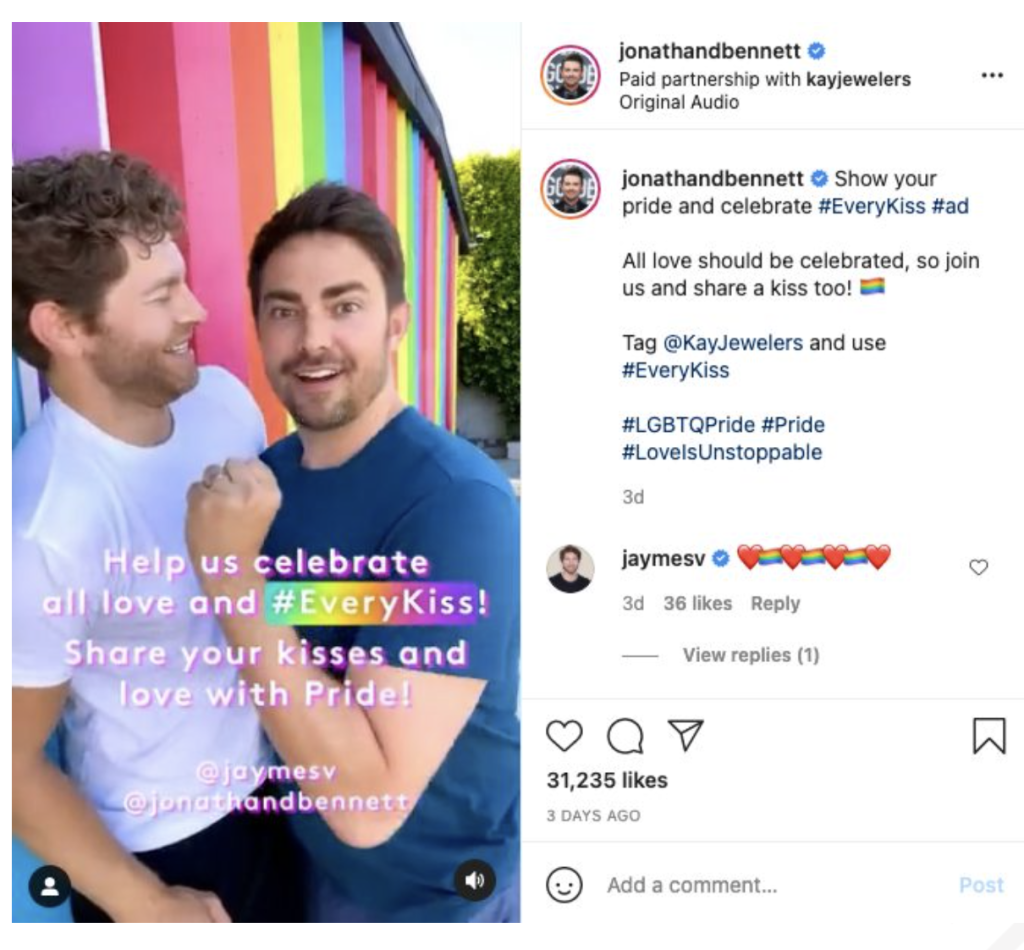
When the pair was tying the knot, Kay–a brand whose marketing has long appealed to only heterosexual couples–partnered with the couple. Bennett and Vaughen worked with Kay Jewelers to design their own, signature ring.
This partnership has continued through they years. Building relationships with LGBTQ+ creators that last over time can be extremely helpful in keep LGBTQ+ audiences engaged with your work and also building trust.
4. Focus on education and advocacy in LGBTQ+ marketing
Consumers want brands to make their stance on LGBTQ+ rights clear. In fact, about 70% of more than 2,500 adults who don’t identify as lesbian, gay, bisexual, transgender, queer or an otherwise member of the community said support from companies should come through hiring practices, advertising and sponsorships, according to CNBC.
The most important thing you can do as a brand when focusing on advocacy: Do NOT back peddle once you have made your stance clear.
Brands like Target and Bud Light were more recently accused of this exact practice during their 2023 pride efforts.
For Target, it was pulling pride merch from hundreds of stores after receiving threats from people on social media.
For Bud Light, it was apologizing for their partnership with famous Tik Toker Dylan Mulvaney after sending her a 6-pack of Bud Light with her face on it.
This back peddling is incredibly harmful to your brand’s image with the LGBTQ+ community, and it comes across as if your efforts were performative–if you don’t stick by them.
One great example of this is The North Face. During Pride Month in 2023, they partnered with famously nature advocate and drag queen Pattiegonia on their “Summer of Pride” campaign.
After receiving backlash, they stayed true to their support, refusing to pull this partnership or message from their social channels and website.

5. Partner with LGBTQ+ nonprofits
A prime example of this is Doc Martens. According to their website,”Every year we support LGBTQIA+ charities and causes across the globe through donations from our business as well as the Dr. Martens Foundation. Last year over $134k was given by the Foundation to support organizations including TransNewYork and Micro Rainbow.”
Not only do the brand partner with nonprofits, but Doc Martens also works with LGBTQ+ artists every year to created unique pride shoes for purchase.

Another excellent example is Adidas, a large corporate donor for LGBTQ+ mental health organization The Trevor Project. The campaign, from imagery to design of the product, had the LGBTQ+ community in mind. And, a portion of the proceeds were given directly to an organization that impacts LGBTQ+ youth with mental health support.
LGBTQ+ people want to know that, if they are being marketed to, the brand actually cares about the community and the impact of social issues the community experiences.
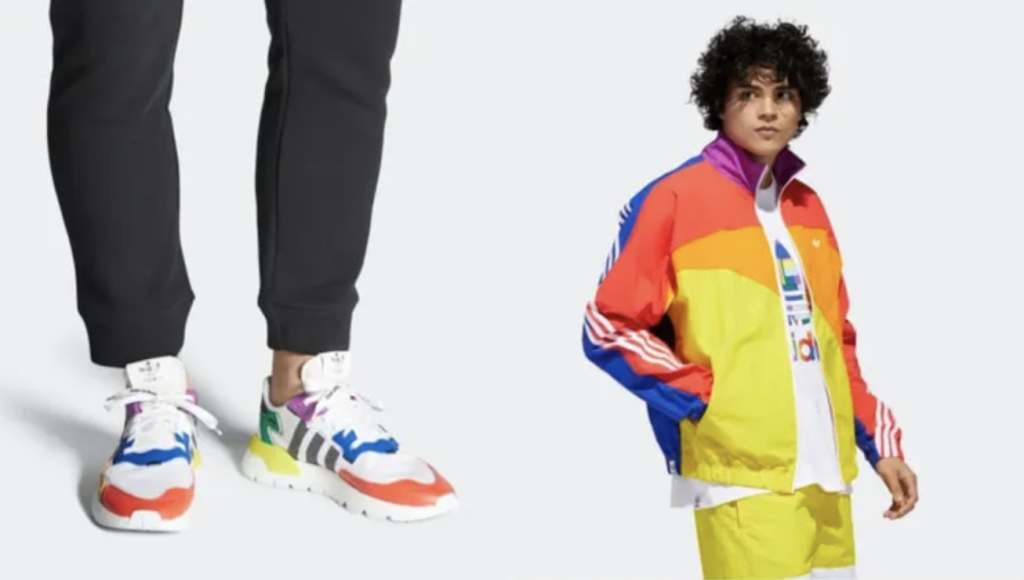
Work with a team who “gets it”
At Chipper, we specialize in LGBTQ+ as a digital marketing agency. We are a team of LGBTQ+ community members and allies who have a strong grasp on authentic branding and marketing to LGBTQ+ audience. Our services include:
- Copywriting
- Dating app marketing strategy
- Google Ads
- Social media strategy and management
- Video and streaming
Learn more about our work at chipperdigital.io.

